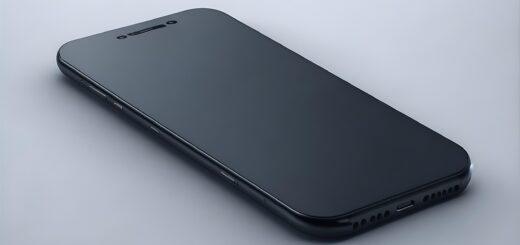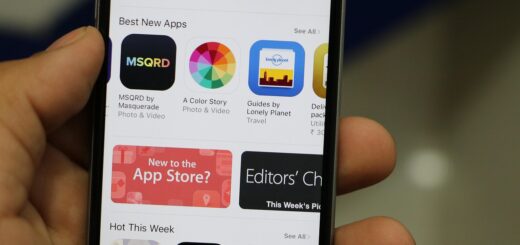A beginner’s guide to installing and using Ubuntu Linux

A Beginner’s Guide to Installing and Using Ubuntu Linux: Ubuntu is one of the most user-friendly Linux distributions, making it an excellent choice for beginners. Whether you’re switching from Windows or just curious about Linux, this guide will take you through installing Ubuntu and getting started with it.
Why learn Linux at all? With the advent of AI and the efficiency with which it has been replacing humans, it warrants a fundamental rethinking of career options and skill development. At the forefront of these innovations is the Linux ecosystem and in order to get into the bandwagon, it is but imperative to have a cursory if not a detailed understanding of Linux. And to that end one will need to have at least a PC running Linux to get familiarized with.
Why Ubuntu Linux? Just because it is widely used on consumer PCs, has great support online and most importantly, is user friendly. In this section we cover the installation and setup of Ubuntu on your PC.
1. Why Choose Ubuntu Linux?
✅ Free & Open Source – No license fees.
✅ Lightweight & Fast – Runs well on old and new PCs.
✅ Secure & Stable – Less prone to viruses than Windows.
✅ Highly Customizable – Modify everything from themes to system behavior.
✅ Great for Development – Supports Python, C++, Java, Docker, and more.
2. System Requirements for Ubuntu
📌 Minimum Requirements:
- CPU: 2 GHz dual-core processor
- RAM: 4GB (8GB recommended for smooth performance)
- Storage: 25GB of free disk space
- USB Drive: 8GB+ for installation
💡 Tip: If your PC is old, use Ubuntu MATE or Xubuntu for better performance.
3. Downloading Ubuntu
1️⃣ Go to the official Ubuntu website.
2️⃣ Download the latest LTS (Long-Term Support) version for stability.
3️⃣ Save the ISO file to your computer.
4. Creating a Bootable USB Drive
You’ll need a bootable USB to install Ubuntu.
✅ Using Rufus (Windows)
1️⃣ Download Rufus and install it.
2️⃣ Insert a USB drive (8GB or larger).
3️⃣ Open Rufus and select your USB drive.
4️⃣ Click “Select” and choose the Ubuntu ISO file.
5️⃣ Set Partition scheme to GPT (for UEFI) or MBR (for older BIOS).
6️⃣ Click “Start”, wait for the process to complete.
📌 Mac Users: Use balenaEtcher instead of Rufus.
5. Installing Ubuntu
Step 1: Boot from USB
1️⃣ Insert the bootable USB into your PC.
2️⃣ Restart and enter BIOS/UEFI (Press F2, F12, DEL, or Esc while booting).
3️⃣ Change boot priority to USB and save settings.
4️⃣ Restart, and the Ubuntu installer will load.
Step 2: Start Ubuntu Installation
1️⃣ Select “Try Ubuntu” (to test) or “Install Ubuntu”.
2️⃣ Choose language and click Continue.
3️⃣ Select “Normal Installation” (recommended).
4️⃣ Tick “Download updates while installing”.
5️⃣ Installation Type:
- “Erase disk and install Ubuntu” → If you want a fresh install.
- “Install alongside Windows” → For dual boot.
📌 Dual Boot Tip: Create a separate partition for Ubuntu.
Step 3: Set Up Ubuntu
1️⃣ Select Time Zone.
2️⃣ Create a Username & Password.
3️⃣ Click “Install Now” and wait for completion.
4️⃣ Remove the USB drive and Restart.
👏 Congratulations! Ubuntu is now installed.
6. Getting Started with Ubuntu
Once Ubuntu boots up, here are some things you should do:
✅ Update Your System
Open Terminal (Ctrl + Alt + T) and run:
sudo apt update && sudo apt upgrade -y
This ensures you have the latest security patches and software updates.
✅ Install Essential Software
Ubuntu comes with Firefox, LibreOffice, and basic utilities, but you might need more.
🔹 Install Google Chrome
wget https://dl.google.com/linux/direct/google-chrome-stable_current_amd64.deb
sudo apt install ./google-chrome-stable_current_amd64.deb
🔹 Install VLC (for media playback)
sudo apt install vlc -y
🔹 Install Git (for coding & version control)
sudo apt install git -y
🔹 Install VS Code (for programming)
sudo snap install code --classic
📌 Alternative: Use the Ubuntu Software Center to install apps without using the terminal.
7. Customizing Ubuntu
Ubuntu’s GNOME desktop is highly customizable.
✅ Enable Dark Mode
1️⃣ Go to Settings → Appearance
2️⃣ Choose Dark Mode
✅ Customize Dock Position
1️⃣ Open Settings → Dock
2️⃣ Move it left, right, or bottom
✅ Install GNOME Tweaks for More Customization
sudo apt install gnome-tweaks -y
8. Learning Basic Linux Commands for Ubuntu Linux
Here are some useful terminal commands:
| Command | Description |
|---|---|
ls | List files in a directory |
cd | Change directory |
pwd | Show current directory |
mkdir myfolder | Create a new folder |
rm myfile.txt | Delete a file |
sudo apt install package-name | Install software |
sudo apt remove package-name | Uninstall software |
df -h | Check disk space |
free -m | Check RAM usage |
9. Dual Booting? How to Switch Between Windows and Ubuntu Linux
If you installed Ubuntu alongside Windows, you can choose the OS at boot:
1️⃣ Restart your PC.
2️⃣ The GRUB menu will appear.
3️⃣ Select Ubuntu or Windows using arrow keys.
📌 Tip: If Windows is missing from GRUB, boot into Ubuntu and run:
sudo update-grub
10. Common Ubuntu Issues & Fixes
🔹 Wi-Fi Not Working?
Try:
sudo apt install bcmwl-kernel-source
🔹 Slow Performance?
Disable animations with:
gsettings set org.gnome.desktop.interface enable-animations false
🔹 Can’t Install Software?
Run:
sudo apt update --fix-missing
Final Thoughts 💡
You’ve now successfully installed Ubuntu Linux and learned the basics of using it. Whether you’re using it for everyday tasks, coding, or development, Ubuntu is a powerful and efficient OS.
If you liked our comprehensive guide on installing Ubuntu Linux, please also feel free to read up our other articles, some of which have been enlisted below in the suggested reading section
🚀 Quick Recap:
✅ Downloaded and installed Ubuntu
✅ Set up and customized the system
✅ Installed essential software
✅ Learned basic Linux commands
💬 Are you excited to explore Ubuntu? Let me know if you have any questions! 🔥



